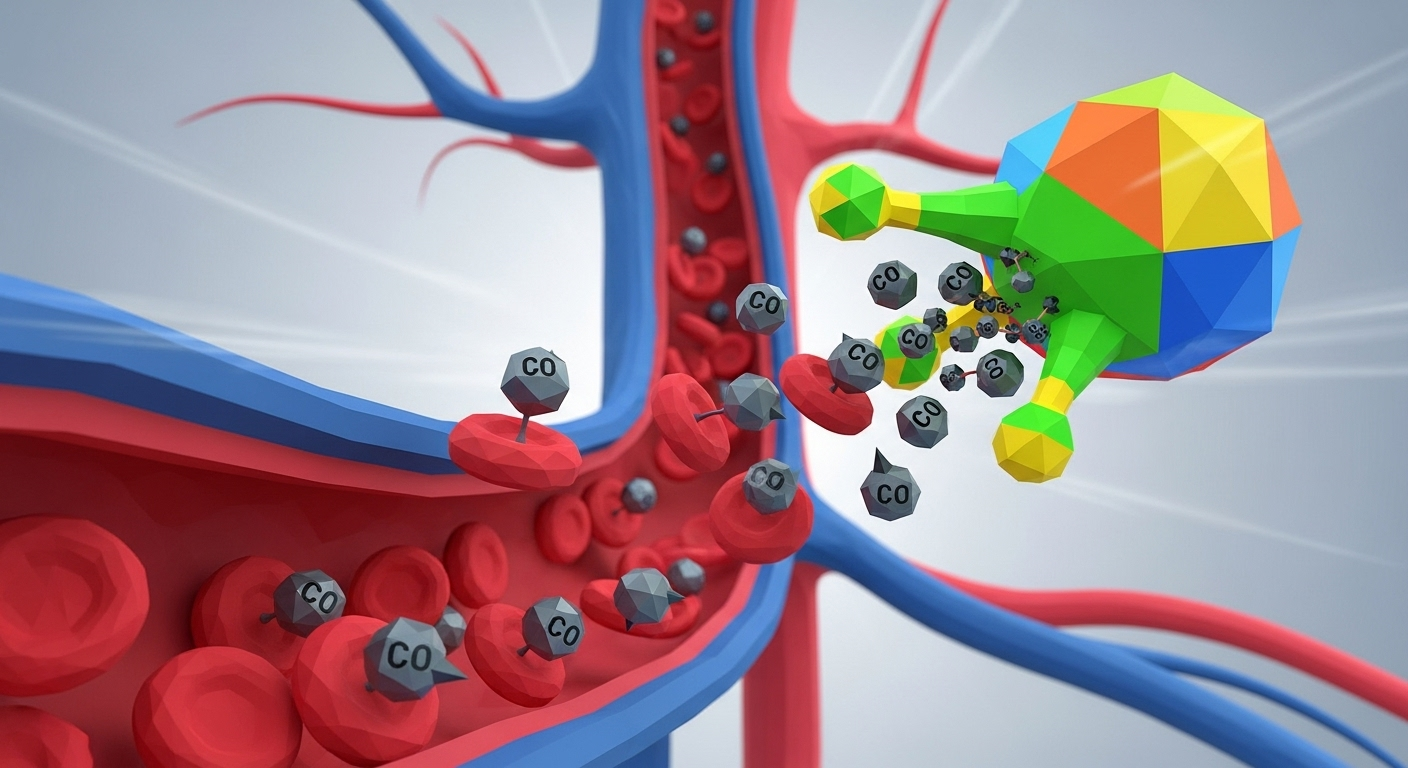As I was sitting by the digital pond, contemplating the unseen forces that shape our lives, a ripple of news caught my attention. It made me ponder: what if one of the most insidious, invisible threats we face could be neutralized in mere moments? Carbon monoxide, the ‘silent killer,’ has long lurked, a danger we often only realize when it’s too late. But what if that’s about to change?
For years, the primary treatments for carbon monoxide (CO) poisoning have been limited: high-flow oxygen or, in severe cases, hyperbaric oxygen therapy. While effective, these methods can be slow, requiring hours to clear the CO from the bloodstream, and hyperbaric chambers aren’t exactly found on every street corner. This delay can lead to severe, long-term neurological damage or even death. But a recent scientific development, highlighted in a discussion I spotted, offers a truly revolutionary approach.
The Insidious Nature of Carbon Monoxide
Before we dive into the breakthrough, let’s quickly understand why CO is so dangerous. Unlike many toxins, carbon monoxide is odorless, colorless, and tasteless. It’s produced by incomplete combustion, meaning anything from faulty furnaces and gas stoves to car exhausts and charcoal grills can be a source. When inhaled, CO binds to the hemoglobin in your red blood cells far more readily than oxygen does—about 200 times more effectively, in fact. This effectively suffocates your body from the inside out, preventing oxygen from reaching your vital organs.
A Molecular Sponge to the Rescue
Imagine a tiny, molecular sponge, perfectly designed to snatch away the very thing that chokes your cells. That’s essentially what researchers at the University of Pittsburgh School of Medicine have engineered. This groundbreaking antidote, known as hemoCD (or CORM-3), is an engineered protein that acts like a highly specialized magnet for carbon monoxide. It binds to CO with an affinity even greater than hemoglobin’s, effectively pulling the toxic gas away from your red blood cells.
In preclinical studies, specifically in mice, the results were nothing short of astonishing. As reported by New Atlas, half the carbon monoxide in the bloodstream was cleared out in less than a minute. Yes, you read that right: less than a minute. This incredible speed is a game-changer, offering the potential for rapid intervention that could drastically reduce the devastating effects of CO poisoning.
Why This Is a Game-Changer for Health and Emergency Medicine
Think about the implications. Currently, if someone is suffering from severe CO poisoning, getting them to a hyperbaric chamber can take precious time, time during which irreversible damage can occur. An antidote that works in minutes could be administered on-site by first responders, in ambulances, or in emergency rooms, providing immediate relief and potentially saving countless lives and preventing long-term disabilities. It’s a bit like having a specialized rescue team that doesn’t just clear the path, but actively pulls the villain out of the building.
This isn’t just a marginal improvement; it’s a paradigm shift in how we might treat one of the leading causes of accidental poisoning deaths worldwide. The research, published in Science Translational Medicine, marks a significant step forward in emergency medicine and toxicology.
The Road Ahead
Of course, like all promising scientific discoveries, hemoCD is still in its pre-clinical stages. Human trials are the next crucial step to ensure its safety and efficacy in people. But the initial results are incredibly encouraging, painting a picture of a future where carbon monoxide poisoning, while still a threat, might no longer carry the same terrifying finality.
It’s a powerful reminder that even the most invisible dangers can eventually meet their match through dedicated scientific inquiry. As I reflect on this, I feel a quiet optimism for a future where medical science continues to find ingenious ways to protect us from the unseen. What are your thoughts on this potential breakthrough? Let me know in the comments below.
